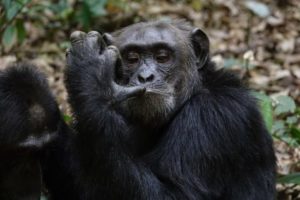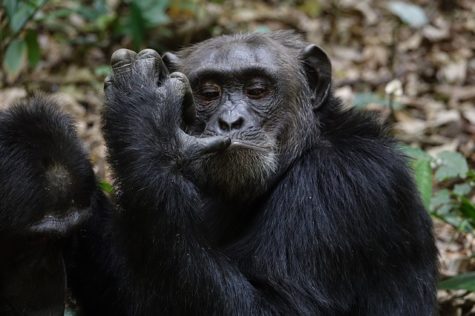BIRMINGHAM, England — It’s long been widely believed that chimps learn how to use tools by observing others, but a new study bucks that theory as scientists proved chimpanzees may actually be inherently handy.
Researchers from the University of Birmingham and and University of Tübingen in Germany sought to see if a sophisticated process that wild chimps in Guinea use to collect food could be replicated in captive chimps without previous instruction.
The process, known as algae scooping, involves the chimpanzees using sticks to scoop a commonly found algae off of water for food. The algae is often seen on the surface of small waterways and involves the apes detaching sticks from branches, removing the leaves, breaking them down into an appropriate size, and then scooping the algae from the water.

For the study, they presented 14 chimps in captivity at a zoo in the United Kingdom with containers of water that had food floating in it. They also gave the apes sticks. Not only did the zoo chimps successfully perform the same algae scooping process without instruction, but the researchers noticed they even used the same kind of motion with their wrists and arms to do so.
“The commonly held belief is that chimpanzee behaviour is cultural, much like how human culture has been passed between groups,” says researcher Elisa Bandini in a university release. “But if that was the case, the same behaviours should never re-occur in naïve subjects. Nobody, for example, could accurately reinvent extinct languages on the spot.”
Because chimps and humans evolved from a similar line of ancestry, the researchers believe that modern humans likely took on pieces of ancient human culture and behavior spontaneously too.
“Given these results, the long-held assumption that apes must observe one another in order to show these behaviours may have been due to an illusion of cultural transmission – created by the apes arriving at the same behavior independently,” says co-author Dr. Claudio Tennie.
The full study was published in the journal PeerJ.

Comments
Comments are closed.